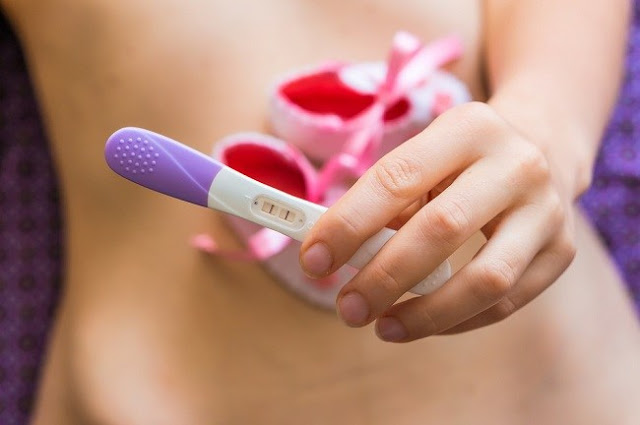How to whiten skin and the risks that accompany it
Dark light, the color of human skin is different from birth, partly due to environmental factors and melanin. However, some people want to get brighter skin by using skin whitening products.
Melanin is a pigment that naturally gives color to the eyeball, hair, and human skin. Dark-skinned people have higher levels of melanin than light-skinned people. Melanin itself is actually a skin protector from sun damage. On the other hand, the desire to have brighter skin makes people use various ways to brighten the color of the skin.
Skin Whitening Products
There are various ingredients and products that are believed to make skin colors lighter, ranging from natural ingredients to products sold in the market.Natural ingredients
Chamomile, milk, lime, egg white, kencur, galangal, and ginger are said to be natural ingredients that are believed to brighten skin tone. However, there are no studies that prove that this ingredient is indeed effective for making skin colors brighter.In-product ingredients are sold freely
Commercially available skin whitening products work by reducing the production or concentration of melanin in the skin. These products usually contain certain ingredients, which in reality are not necessarily safe. By looking at each content in it is expected to make you more alert. The products below are generally categorized as safe if used according to the instructions on the label.Azelaic acid
Azelaic acid is derived from the fungus species Pityrosporum which can inhibit the formation of melanin cells, as well as reduce the production of free radicals. Therefore, this acid is often used to treat excess pigment and excess melanin, as well as blackness on the skin due to acne and melasma.
Kojic acid
Kojic acid is derived from certain types of fungi that are used to treat excess pigment disorders. In Japan, ingredients that work by inhibiting the production of enzymes that control the production of melanin have been widely used in skin care products. This material is safe to use up to a concentration of 1% of the product. But on the other hand, research has found that this ingredient can potentially cause redness of the skin and contact dermatitis.
Arbutin
Arbutin is an ingredient derived from plants and is used to treat post-inflammatory hyperpigmentation. Arbutin in higher concentrations can be more effective than in lower concentrations. However, arbutin in high concentrations can risk causing an increase in pigment which makes the skin look dark. Compared to hydroquinone, this material is claimed to be safer.
Lycoris extract
The mechanism of action of this material is more or less similar to kojic acid, with the main component being glabridin which inhibits the activity of enzymes that control the formation of melanin.
Hydroquinone
Hydroquinone has been used to brighten the dark parts of the skin due to the consumption of birth control pills, pregnancy, skin sores, and drug hormones. In certain cases, hydroquinone can cause redness, swelling, and itching. Users of products containing hydroquinone are advised to avoid sun exposure and skin darkening methods.
Mercury
The use of mercury in skin whitening is prohibited because it can cause permanent disturbance to body organs, such as the brain, liver, digestive tract, and kidneys from the wearer. Mercury-containing cosmetics can also contaminate home appliances around these products, which can increase levels of mercury in the urine.
Steroids
Adverse effects of steroids are related to concentration, duration of use, skin condition, affected body part, and age of the user. Some of the side effects that can arise include Cushing's syndrome, glaucoma, stunted body development, thinning of the skin, spread of infection, and acne.
Skin Bleaching with a Doctor
Skin whitening can be done by doctors with a variety of methods, including peels and lasers.Peeling
Peeling is done by applying a chemical-based liquid to remove dead skin cells and stimulate the growth of new skin cells, so the black spots on the skin will be reduced. In addition to its non-permanent effects, carefulness is needed to find a qualified dermatologist, accompanied by a clean and safe practice. In addition, although it is performed by a doctor, this procedure can also make the skin brighter or vice versa, darker. And also can cause infection. After treatment, patients also need to protect themselves from sun exposure for at least one month.
Laser
Skin whitening laser works by removing the top layer of dead skin cells that produce melanin. This procedure can work for some people, but it fails for some others, or even does not bring the desired effect. In addition to being inexpensive, whitening lasers generally have post-use side effects such as redness, bruising, and hardened skin. In certain cases, complications can occur such as skin infections, scarring, until the skin becomes darker or too white.
Keeping the Skin Healthy
Rather than crave whiter skin, it is better to keep skin healthy, whatever the type and color of the skin. There are many simple ways you can do to get healthy skin without spending too much. Here are some of them.- Avoid being outdoors between 10 am to 4 pm, if you are not wearing long-sleeved clothing or using sunscreen with a minimum SPF of 15. The color of dark clothing tends to provide more protection than bright color clothing. Apply sunscreen at least 30 minutes before leaving the house.
- Choose a sunscreen that protects from UVA and UVB exposure. Reapply every 2-3 hours, especially if you are exercising outdoors and swimming.
- Apply lip balm to protect lips from sun exposure which can cause lips to burn.



Comments
Post a Comment